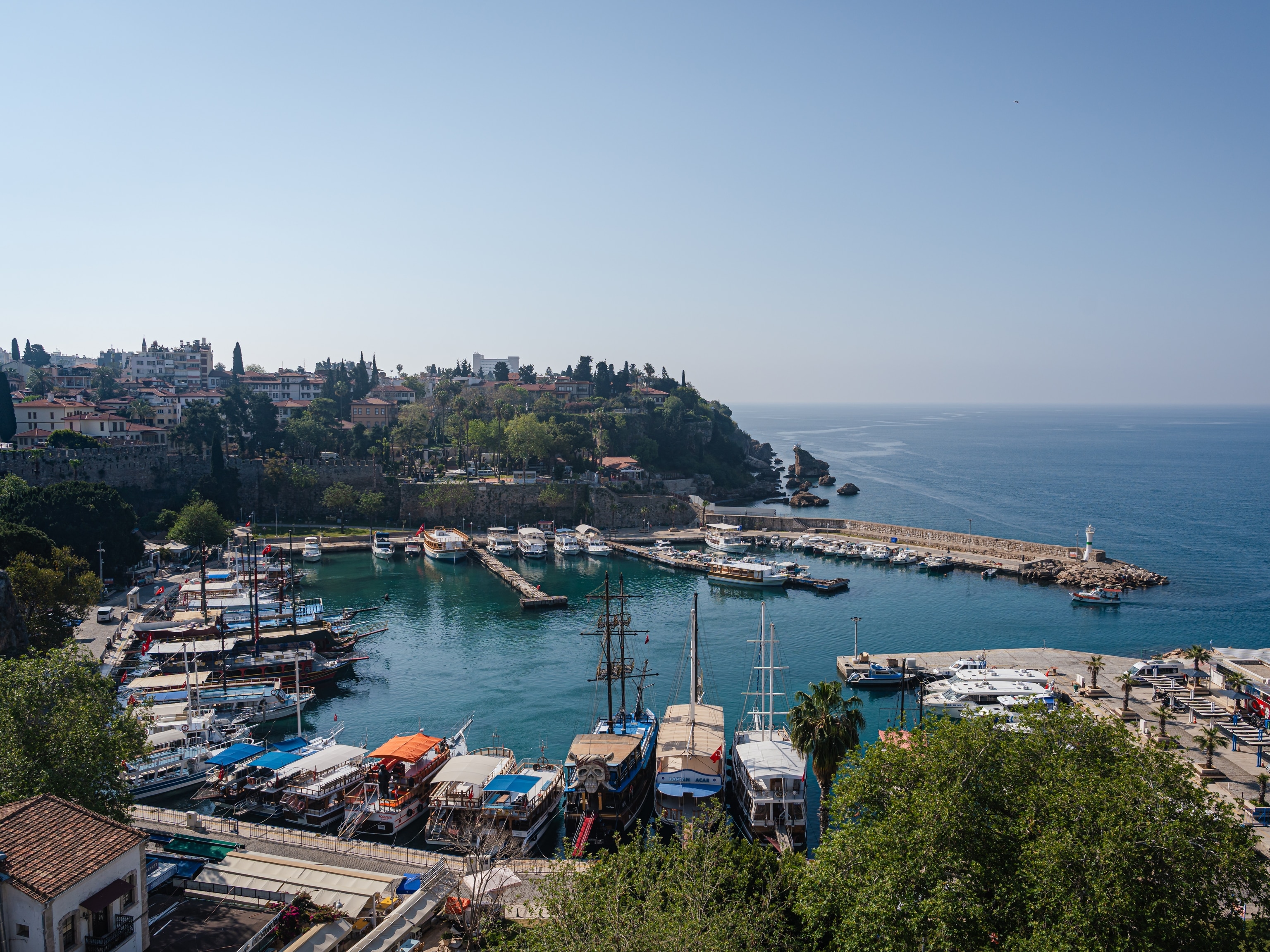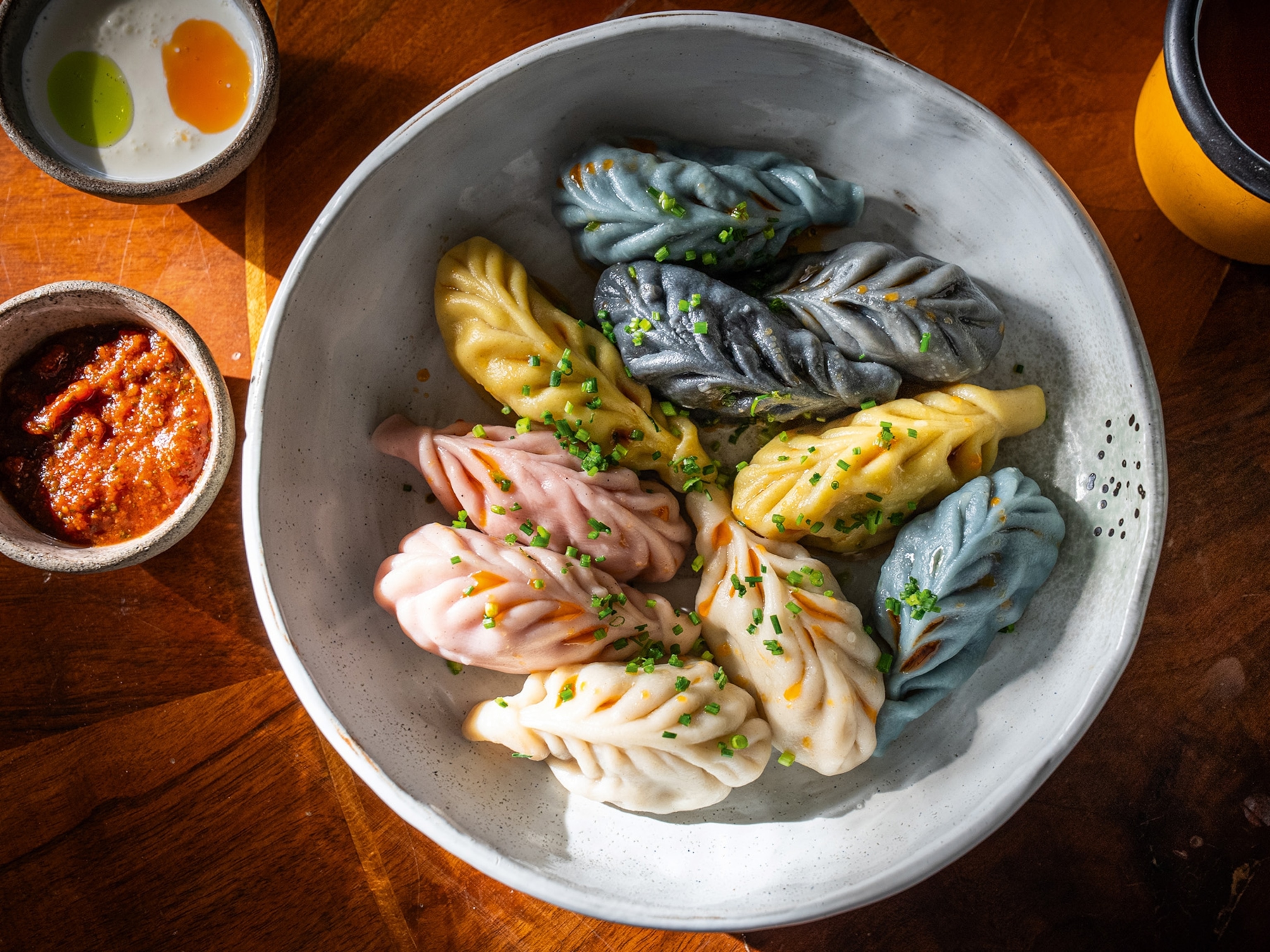Why India has one of the world's most creative restaurant scenes
Across the country, inventive fine-dining restaurants are flourishing — from the Himalayan foothills down to Chennai’s shores.
A new generation of Indian chefs is tapping into the country’s diverse culinary traditions and pushing their boundaries, crafting innovative tasting menus and dishes such as reimagined biryani and chilli-salted plum lollipops. But just a decade ago, fine-dining restaurants in India were surprisingly few and far between, especially outside key metropolitan hubs. The arrival of Delhi’s Indian Accent and its six-course tasting menu in 2009 was significant, but it didn't spark a revolution. Meanwhile, in Mumbai, Indigo and The Table were defining sophistication, albeit with European ingredients. Then Bombay Canteen and Masque opened there in 2015 and 2016, finally bringing a focus on Indian produce and cuisines and moving away from palatial formality and Euro-centric menus. These years were pivotal — they “shaped the future of what Indian food is today”, says Hussain Shahzad, executive chef of Mumbai’s Hunger Inc restaurant group. Chefs who had been working abroad, he says, “came back to India, super proud of their heritage… and said: ‘let’s push the boundaries of Indian food’”.

Today, fine dining in India aims to highlight the diversity of cuisine across its 28 states. “For a long time, Indian cuisine was boxed into stereotypes, often reduced to a handful of dishes that travelled abroad,” says Johnson Ebenezer, chef and co-founder of fine-dining farm-to-fork restaurant, Farmlore in Bangalore. Hussain agrees. “That’s why we can never look at Indian food as Indian cuisine,” he says. “There’s nothing called Indian cuisine. It’s the cuisines of India.”
This sentiment has carried through to today, with chefs exploring hyperlocal ingredients, Indigenous techniques and regional narratives, and doing all this “with the same respect that French or Japanese cuisines have commanded for decades”, says Johnson. Restaurants such as Indian Accent, Masque and Trèsind — founded in Dubai and expanded to Mumbai — focus on telling the story of India at large, while others zoom in closer, such as at Noon. This game-changing outfit operated in Mumbai between 2022 and 2024, and saw chef Vanika Choudhary concentrate on flavours from the surrounding state of Maharashtra, along with those from Kashmir, where she grew up, and neighbouring Ladakh.
As well as a boom in ambition and diversification, there’s also a new market. “With the growing economy, people demand more fine dining and more experiential dining,” says chef Prateek Sadhu, who co-founded Masque and now runs Naar in Himachal Pradesh. Driven by domestic diners, the country’s food movement is being built inside-out, rather than responding to tourists. “India doesn’t need to perform its cuisine for global approval,” says Johnson. “It needs to live it fully, and in doing so, the world will come to us.”
Papa’s, Mumbai
Climb the stairs from a bustling sandwich shop called Veronica’s, and you may feel as though you’ve entered the whimsical Wes Anderson celluloid world of The Darjeeling Limited. Playfulness runs through the heart of the Hunger Inc hospitality group, of which Papa’s is part, though it takes experiential dining into a new stratosphere, melding precision cooking with impromptu sleight-of-hand tricks and banter from the staff. Partially a tribute to Floyd Cardoz, the group’s inimitable founding chef who tragically passed away in 2020, it builds on the legacy of Bombay Canteen, which helped define modern Indian cuisine through its playful twists on traditional dishes. “It’s the same tongue speaking two different languages,” says Hunger Inc’s executive chef, Hussain Shahzad.
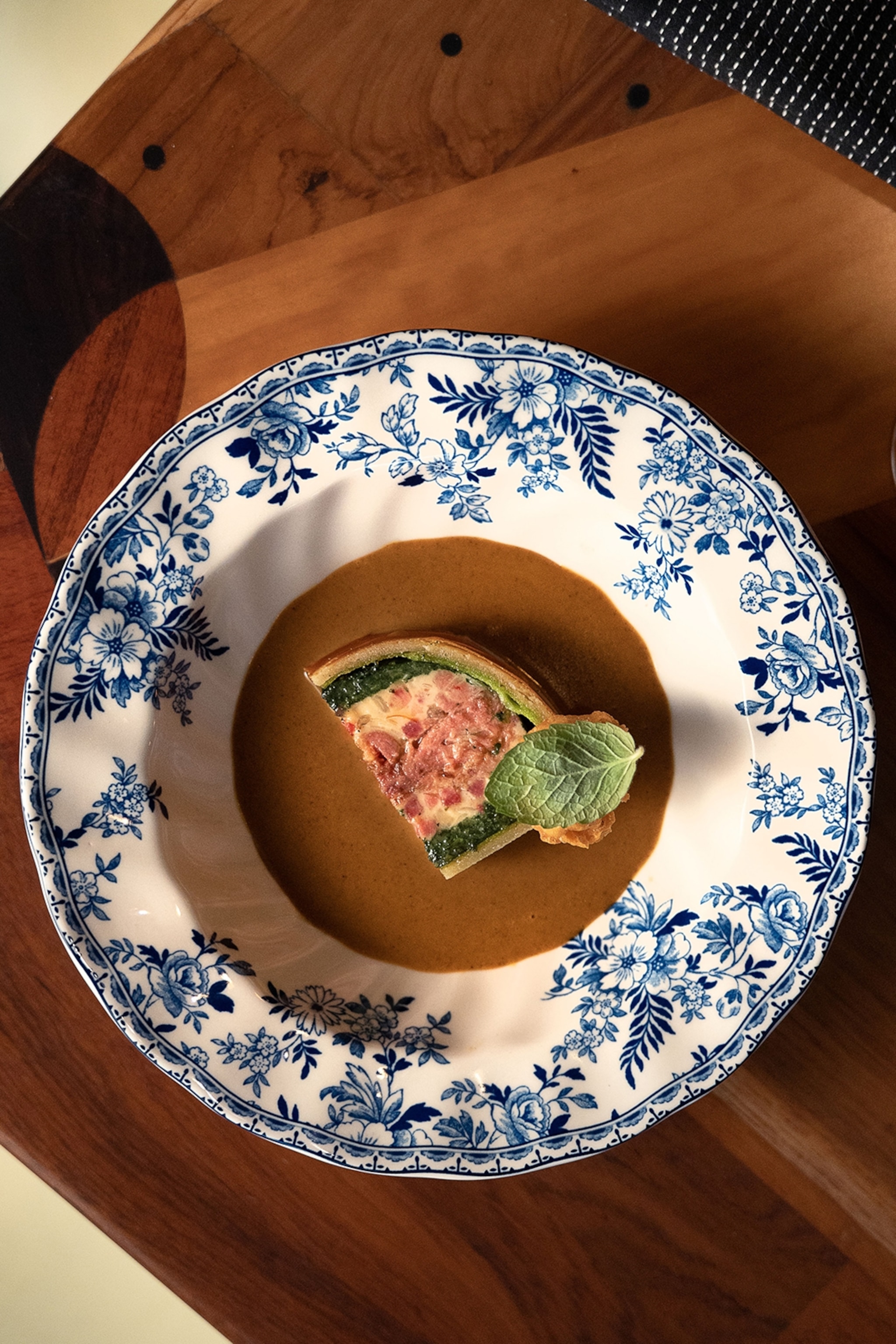

At the 12-seat chef’s counter, the cooking is brave and fun, drawing from Hussain’s Chennai background, but also from his team-members’ gustatory memories and heritages — such as front-of-house maestro Madhusudhan Kashyap, who hails from Bangalore. It builds to a thrilling climax with two masterly savoury finale courses. A lamb shank nihari (slow-cooked stew) is conjured up as a meticulously layered pithivier, the whole thing displayed at the table before being sliced and encircled by yellow curry sauce, silky and humming with the fragrance of paan ki jad (dried galangal root) and khas ki jad (vetiver root), in addition to the usual suspects of cinnamon, cardamom and clove. Biryani, meanwhile, is reimagined to include a crispy layer of rice known as the socarrat — more often associated with paella. Hussain was inspired by his days in New York at Eleven Madison Park, and the fragrant crispy rice sits alongside rosy-pink dry-aged duck breast in a dish that shows an Indian chef making global methods his own.
Try it: 13-course tasting menu from 7,000 INR (£60).
Naar, Kasauli
If you think you know Indian cuisine, think again. Challenging conventions is part of the ethos behind Prateek Sadhu’s restaurant Naar, a remote destination-dining venue fringed by its forest farm and jaw-dropping vistas across the Himalayan foothills and the town of Shimla. Probably India’s most ambitious restaurant, it seeks to write the future canon of Himalayan fine cuisine, inspired by culinary traditions belonging to a vast area — larger than Spain — stretching from Sadhu’s home of Kashmir in the north to Sikkim, Assam and Nagaland in the east, and extending south to Uttarakhand.
There’s no molecular manipulation here. Rather, Noma-influenced Prateek draws on ancestral techniques discovered through his research in remote villages to produce a masterful menu that feels organic and personal and takes in everything from fresh trout to noodles and fermented chilli. Beginning with improbably light bites such as fiddlehead fern, raw mango tart and doughnut-like askalu bursting with pickled pork and apple butter, the seasonally changing menu runs through original combinations — smoked trout roe with savoury banana custard; punchy fermented pork with gentle rice porridge; and charred pineapple with contrasting, cloud-like malai ice cream to finish.
Try it: 14-course tasting menu from 6,800 INR (£58).
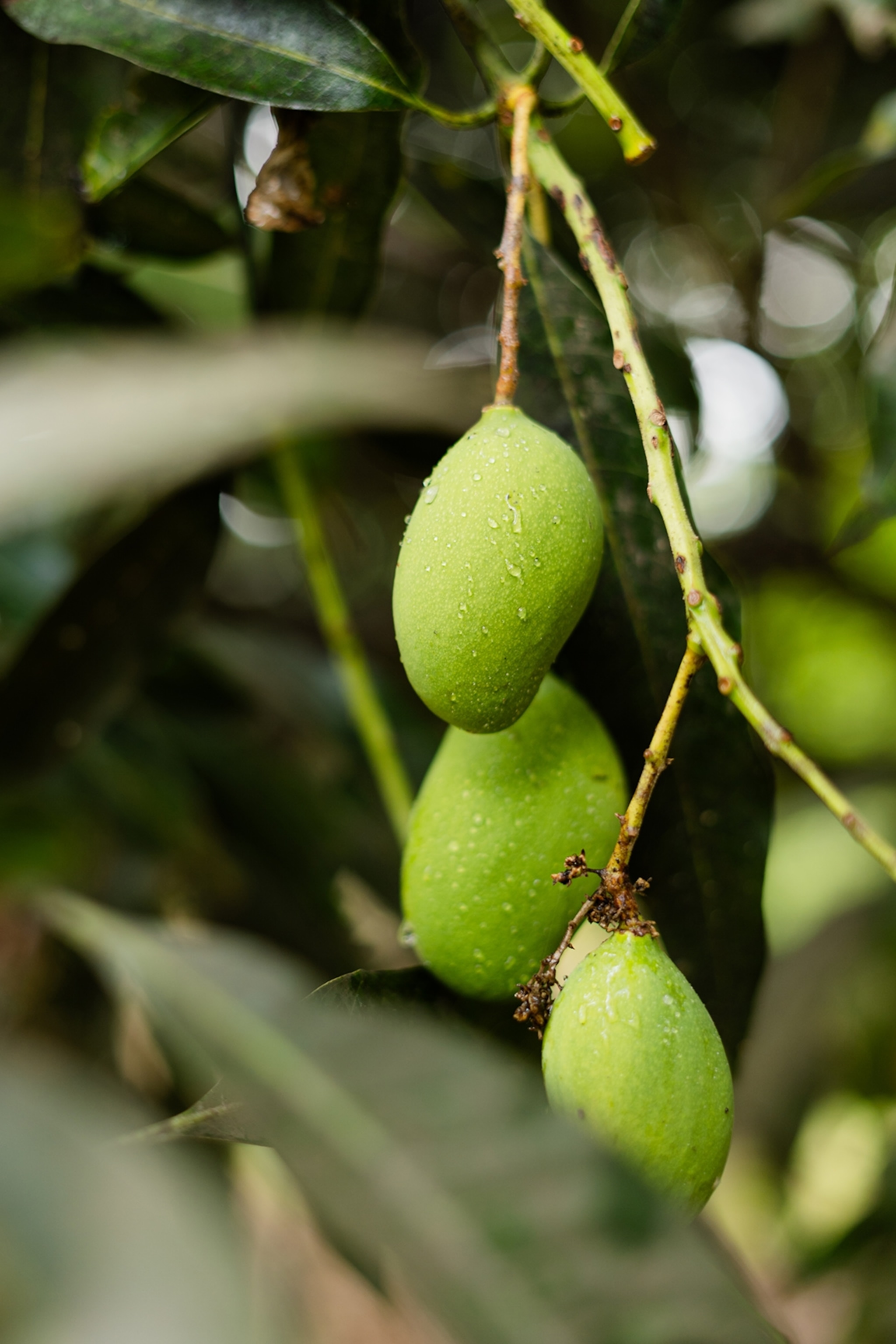
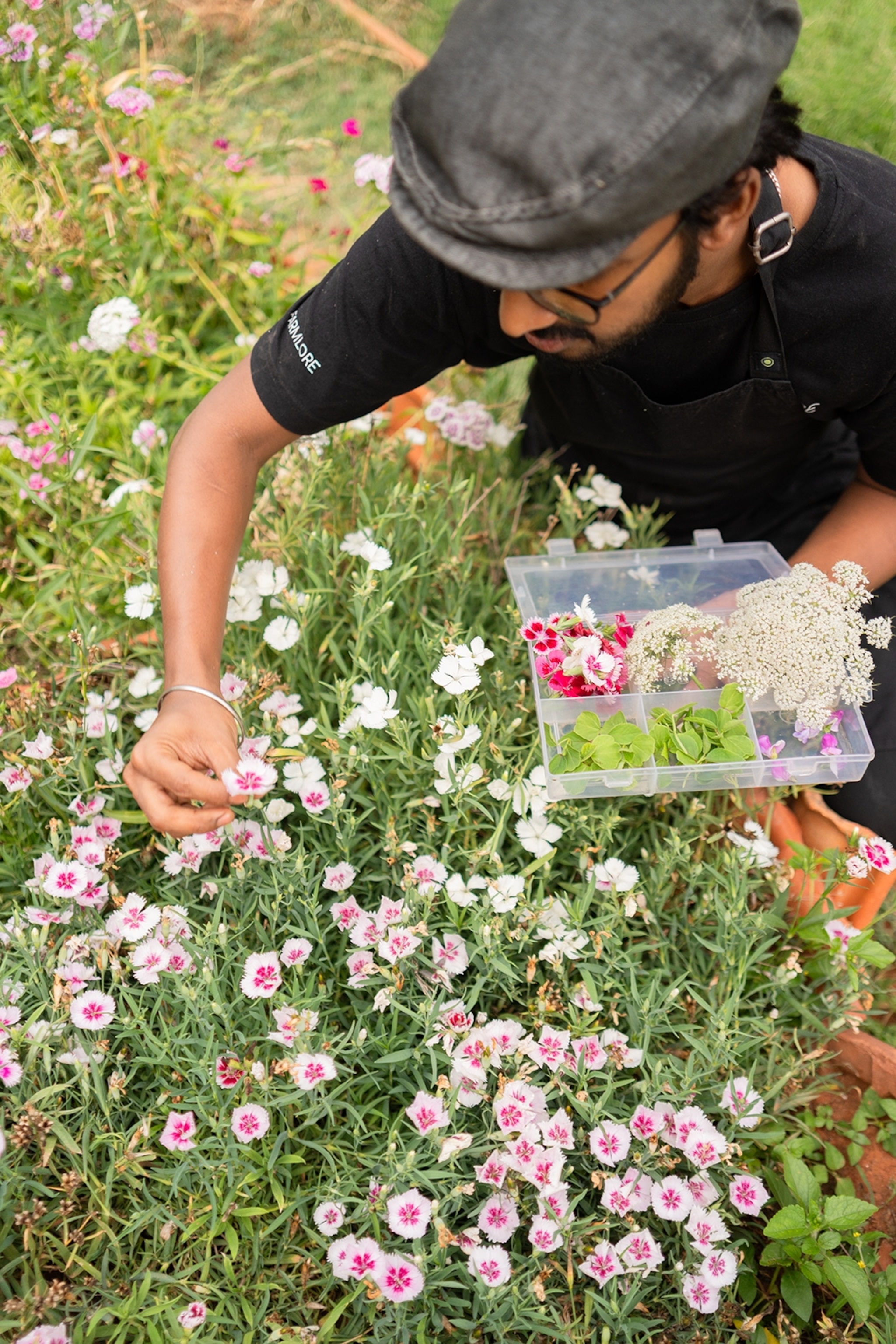
Farmlore, Bangalore
Farmlore is located on the southern Indian city’s outskirts, and guests tour its 37-acre farm before walking along a path shrouded in mango trees to the restaurant. A mural depicting Bangalore’s vibrant city life forms the backdrop to a sleek, modern dining space powered by solar panels. The restaurant employs sustainable practices at every stage of production, from food sourcing to waste — the wood-fired cooking uses only mango wood and Hallikar cow dung collected on site. “Unlike Mumbai, which thrives on its cosmopolitan buzz, Bangalore is quietly experimental,” says chef and co-founder Johnson Ebenezer, pointing to the conscious, sustainable dining values of the establishment’s young customer demographic.
Farmlore blends tradition and innovation through its cattle rearing, zero-pesticide and hydroponic farming, fermentation, fire cooking and the use of indigenous ingredients including aloe vera and chigli, a red ant chutney. The menu changes monthly to reflect the farm’s rhythms, but you can expect comforting, innovative dishes such as warm lobster salad with wood-fired greens, cured egg yolk and lotus root, with an irresistibly fiery chilli sauce. And for dessert during jamun plum season, a deep violet lollipop, dipped in chilli-salt gel — a play on the typical way of eating this hyper-seasonal fruit.
Try it: 6,825 INR (£58) for a 10-course tasting menu, 4,200 INR (£36) for a five-course lunch.
Inja, New Delhi
Chef Adwait Anantwar pushes beyond India’s boundaries for inspiration, a stance that’s instantly declared in his restaurant’s shibori artwork. Crafted from Indian silk, the textile is a metaphor for cuisine that melds the Japanese craft with and Indian materials. It’s not a fusion restaurant though, Adwait insists. “My first thought is always to respect the soul of an ingredient,” he says, meaning deeply rooted ingredients like kaji nemu (an Indian citrus fruit) are not overmanipulated. The Japanese element “comes through in precision, restraint and clarity of flavour”, he says.

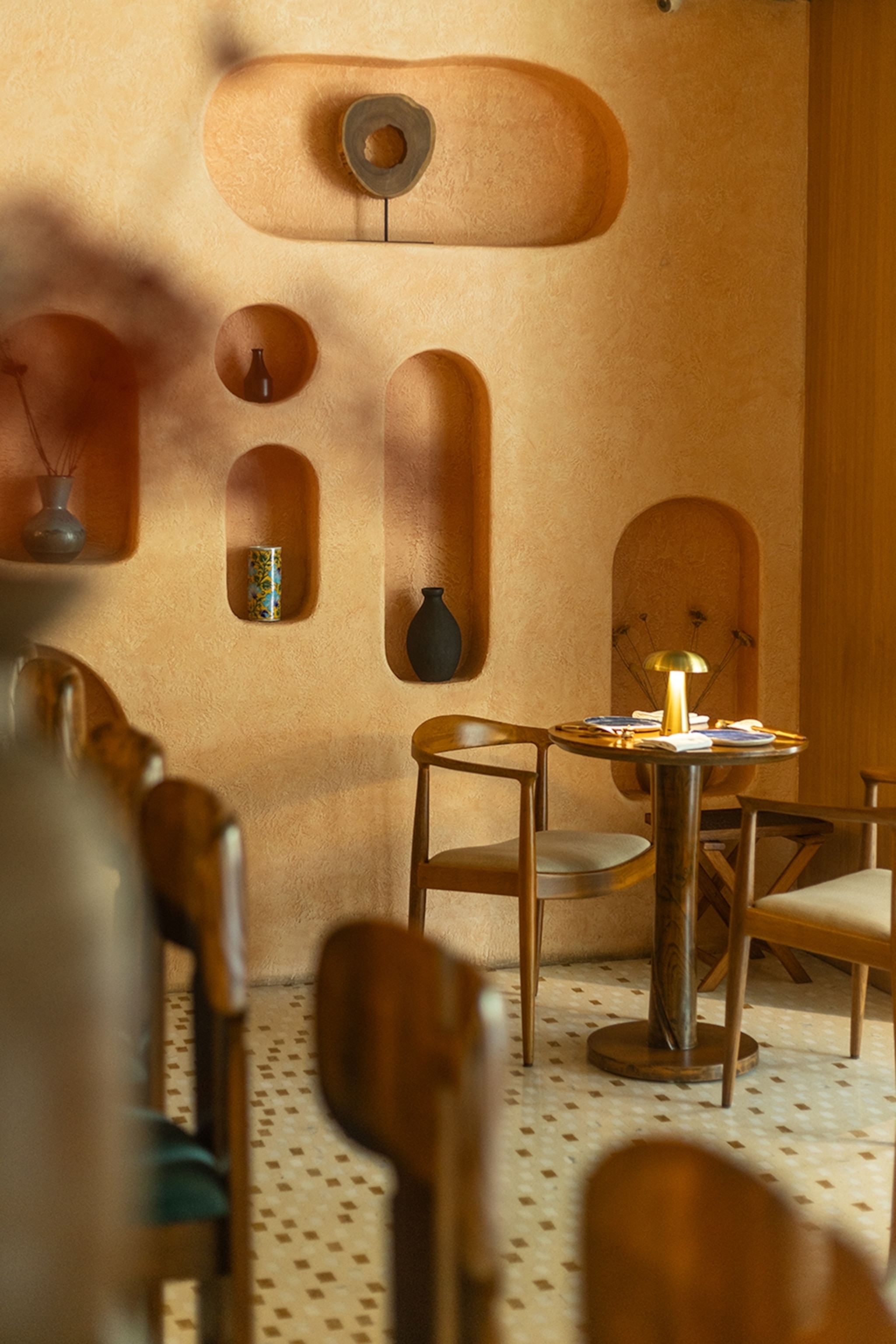
Indian aam papad (mango leather) is shaped into a tuna hand roll, while cold somen noodles are served with the local style of sugarcane juice which is refreshing, gently sweet and slightly grassy. Adwait takes inspiration from Delhi’s leading restaurants, too, evident in his take on the Mangalore bun from the capital’s south Indian venue, Gokulam. He serves the fried, sweet bread with two butters: curry and coffee, both finished with shavings of smoky shio-koji fermented banana. And a play on the famously butter-forward chicken at Aslam — a Delhi institution — is flavoured with sake and served with shokupan Japanese milk bread.
Try it: 11-course tasting menu from 6,500 INR (£56).
Trèsind, Mumbai
Opened in 2019, Mumbai’s Trèsind is part of the same group as Dubai’s three-Michelin-starred Trèsind, led by alchemical chef Himanshu Saini. Sleek and elegant, the restaurant serves progressive Indian cuisine that’s inventive, bold and intricate, while being rooted in tradition. Executive chef Sarfaraz Ahmed leads the Mumbai kitchen — sometimes bringing in his Himachali heritage and pasta-making skills — constructing tasting menus that are diverse in colour, texture and flavour. Highlights include lamb tortellini with blue cheese and bone marrow curry, scallop wellington with parmesan moilee (creamy curry) and black truffle, and the signature khichdi of India: a saffron-infused rice porridge layered with ingredients from all 28 states, served with full-blown theatrical flourish on a platter in the shape of the country.
Try it: Ten-course tasting menu from 4,200 INR (£36); 14-course degustation menu from 6,000 RNI (£51).



